Let’s get this out of the way: I never got the fat bike thing. Growing up riding in the South far from any real elevation, these oversized tire monsters seemed like toys with no real performance-driven purpose. But, now firmly planted out west and after a few months spinning the Borealis Keystone eMTB on everything from Utah mountain trails, rides across town and even flowy singletrack, I’m officially eating my words.
While Borealis might fly under the radar at your local bike shop, this ain’t your typical slap-a-motor-on-a-fatbike situation. They’ve done their homework. The Shimano EP8’s 85Nm of torque pushing those 5-inch tires creates something that doesn’t just monster-truck over obstacles – it actually likes to party.
My mind changed on singletrack of all places, the place I figured the bike would do the worst. Sure, any bike can ride down a paved road, but how could it do on a real MTB trail? Well, as it turns out, a full-send on this beast isn’t just possible, it’s addictive. The playful, yet stable geo coupled with 5 inch massive tires at low PSI make for a fat bike that plays like its skinny trail bike friend. Turns out I’ve been sleeping on fat bikes, and the Keystone woke me up.
After months of riding everything from technical trails to grocery runs, I’ve got some thoughts about what makes this bike tick.
Spoiler alert: it’s way more than just another electric fatty.
My Experience Riding The Borealis Keystone E-Bike
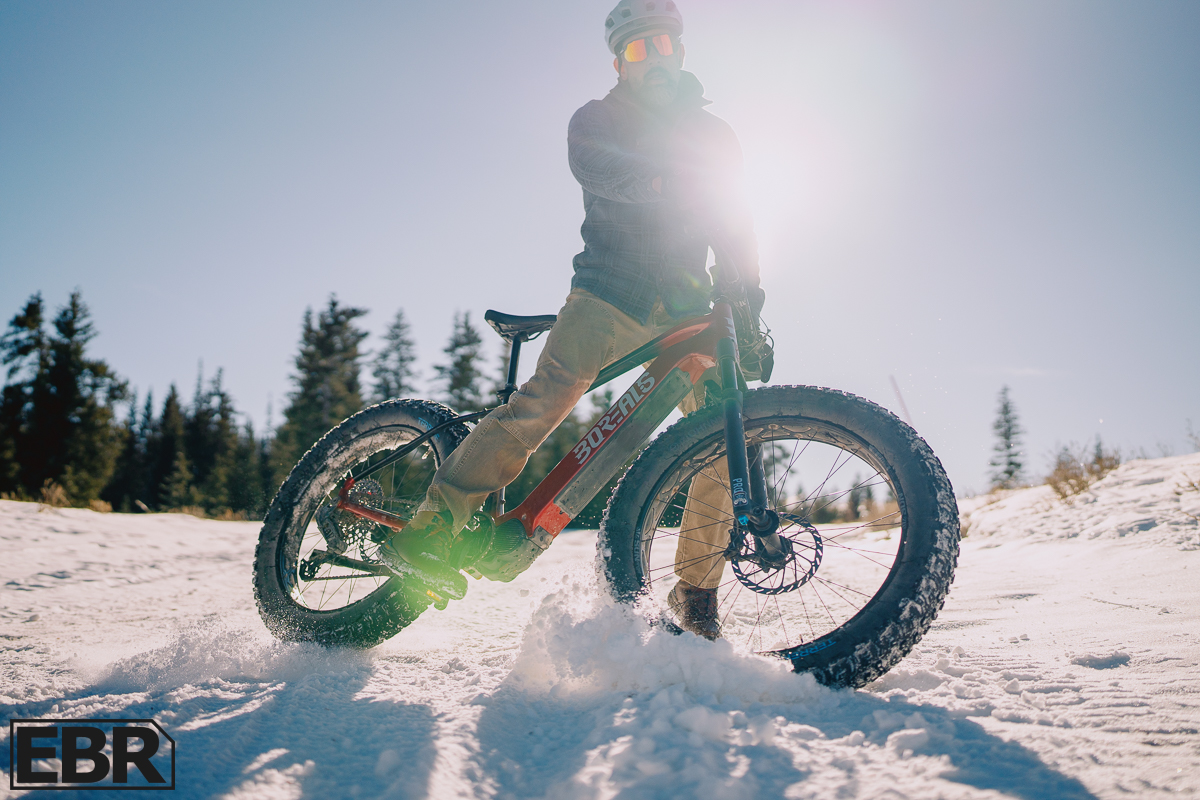
Let’s be real – I’ve never been much of a fat bike guy. Most of them sacrifice speed and technical capability, two things I live for on the trails. But after a few months throwing the Keystone around, this one’s different. You can feel it right out of the gate.
The frame is a head-turner, with clean lines and seamless welds that had me convinced it was carbon. Nope – just really well-executed hydroformed aluminum, which helps explain how they got this beast down to a surprisingly reasonable 56 pounds. My test rig came in red and black (there’s also a grey/black option), and the large frame is part of a smart size range that’ll fit riders from 5’2″ to 6’5″.
Out on the trails, this thing immediately shows its pedigree. The Shimano EP8 motor delivers that butter-smooth pedal feel you expect from a premium mid-drive, with 85Nm of torque that makes technical climbs feel almost too easy. Those massive 5-inch tires absolutely demolish whatever’s in their path – snow, mud, chunky rock gardens, you name it. Fair warning though: they’ll make you sound like a monster truck on pavement, and you definitely don’t want to run out of battery miles from home with these rolling tanks.
Here’s what really surprised me: running these tires at about 10 PSI, the hardtail frame rides nearly as plush as a full-suspension rig. I’m not kidding – drops and jumps feel so controlled that I started wondering if the Manitou Mastodon Pro fork (a proper unit with 34mm stanchions and adjustable 120-140mm travel) might be overkill. A rigid fork option could save some serious weight and cash while still keeping things cushy.
The component spec shows Borealis wasn’t messing around. SRAM’s GX Eagle Transmission paired with their AXS shifting gives you a massive 520% gear range through that 10-52 cassette – crucial for a bike that needs to both crawl up stupid-steep stuff and still cruise at speed. The G2 RS brakes with 200mm/180mm rotors provide all the stopping power and modulation you’d want when you’re piloting this much bike.
I’ll admit it – the Keystone turned me into a fat bike believer and it’s definitely a contender for our Best Electric Fat Bike. By nailing the geometry (that 69° head angle and 1223mm wheelbase is money) and backing it up with legit components, Borealis has built something that transcends the usual fat bike compromises. It’s not trying to be everything to everyone, but for year-round trail riding without limitations? This thing absolutely rips.
Range
Estimated Range (from Borealis):
- No Range Estimation Provided
Real World Range Test Results:
- 38 miles on Boost (Max PAS)
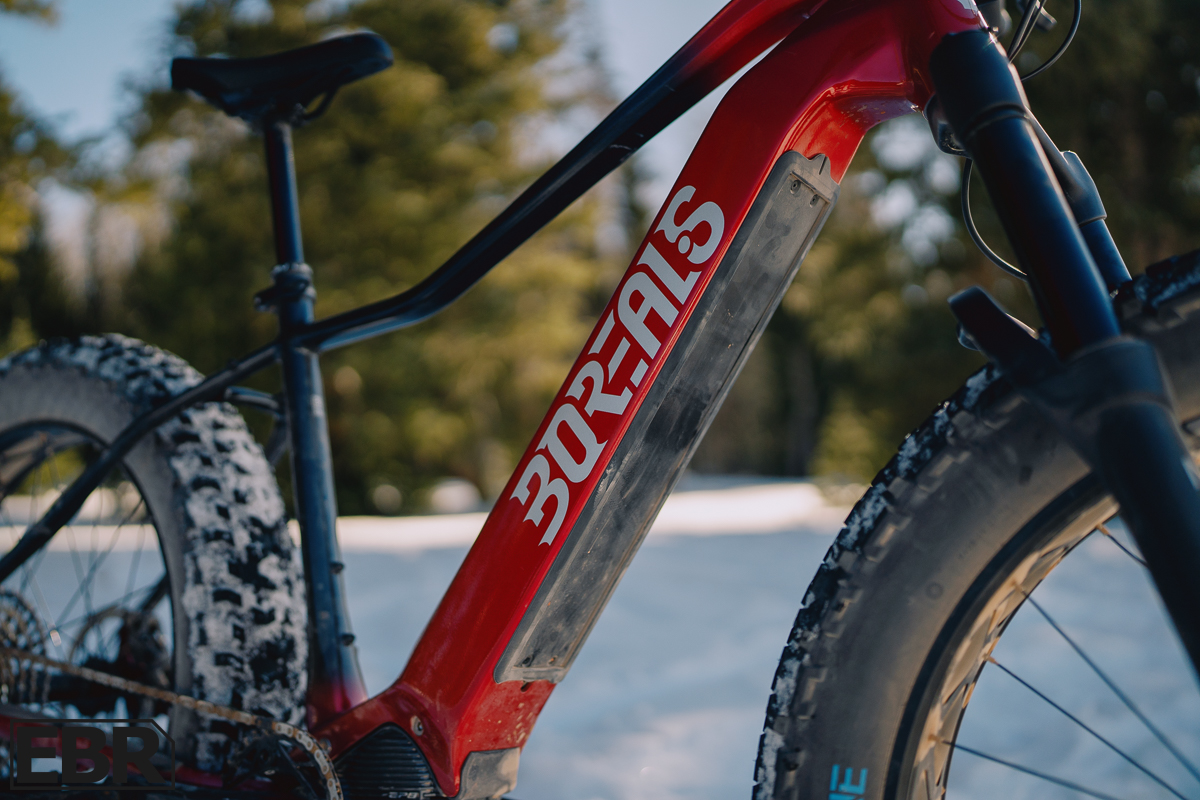
One of my favorite parts of testing e-bikes is comparing those optimistic factory range estimates against real-world numbers. Interestingly, Borealis doesn’t make any range claims for the Keystone – a refreshingly honest approach in a market full of best-case-scenario promises.
So I put on my scientist hat (and did some back-of-the-napkin math using the E-Tube App settings). With the Eco mode tuned to 50% of available power, we can make an educated guess that you’d roughly double the range compared to full power. Here’s what I found:
Running flat out in Boost mode (because who doesn’t love maximum power?), I squeezed 38 miles out of a single charge. Do the math, and you’re looking at a theoretical 76-mile range in Eco – though real-world conditions like terrain, rider weight, and whether you’re fighting those fat tires through deep snow will obviously swing that number around quite a bit.
For a bike pushing this much rubber and running a Shimano EP8 at full tilt, those are solid numbers. Unless you’re planning some epic backcountry adventure, you’ve got more than enough juice here for a proper day of shredding.
Power (Motor & Battery)
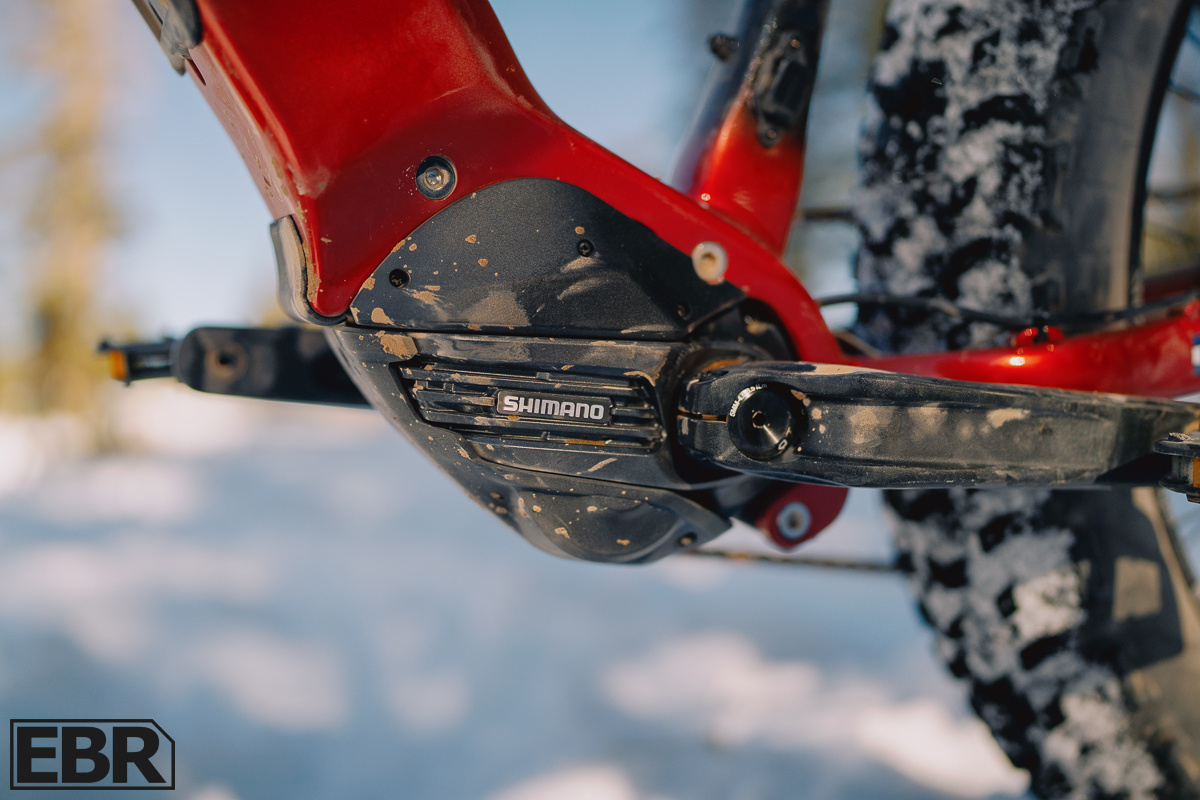
The Keystone comes packing Shimano’s EP8 mid-drive system – a 250W motor that punches well above its weight class with 85Nm of torque and up to 400% pedal assist. If you’re new to e-bikes, those numbers translate to “plenty of oomph” for crushing climbs or plowing through deep snow.
The real magic happens in Shimano’s e-Tube app, where you can get your geek on tweaking assist levels and creating custom ride profiles. Want more juice for that gnarly climb but better efficiency for the fire road approach? You can dial that in. Plus, the whole system (display, controller, battery, and motor) can receive over-the-air updates through the app – always nice to see your bike getting smarter over time.
Juice comes from a removable 630Wh Shimano battery (BT-8036 for the spec sheet nerds) that locks down with a key. Being able to pop the battery off for charging or security is clutch, especially if you’re apartment living or need to leave the bike locked up outside.
Components
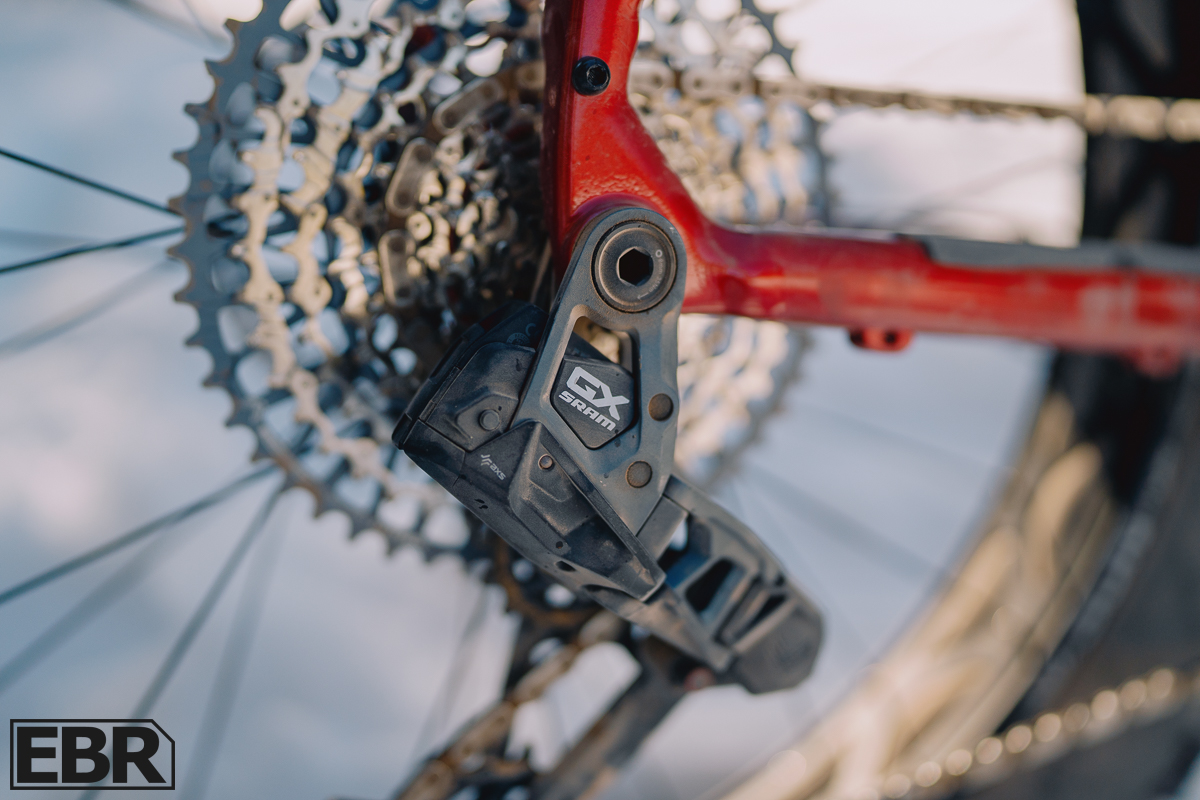
Let’s break down this build, and you’ll see why the Keystone isn’t your average fat bike. The heart of this beast is that adjustable Manitou Mastodon Pro EXT fork with beefy 34mm stanchions, giving you 120-140mm of tunable squish – way more capable than the pogo sticks you usually find on fat bikes.
The drivetrain is where things get interesting. SRAM’s GX Eagle Transmission paired with wireless AXS shifting isn’t just fancy tech for the sake of it – that 10-52T cassette mated to a 36T chainring gives you all the range you need for both crawling through deep snow and actually keeping up on group rides. The whole system shifts buttery smooth under power, which matters when you’re muscling around this bike.
Borealis didn’t skimp on the contact points either. You’re getting Ergon lock-on grips (your hands will thank you), a KS Lev Integra dropper post (125mm on S/M, 150mm on L/XL), and a WTB Volt saddle that’s proven itself on countless builds. The cockpit is dialed with a short 50mm stem and their house-brand carbon bars – giving you the control you want when things get sketchy.
Braking duties fall to SRAM’s G2 RS 4-piston setup, with a 200mm front/180mm rear rotor combo. It’s got the bite you need for controlling this much rolling mass, especially when loaded down with gear on those rack mounts.
Speaking of mass – let’s talk wheels. My test bike came with the SUNringle Mulefüt 26×80 wheelset, which at 2600g might sound heavy until you realize my Stumpjumper’s 29er alloy wheels are only 400g lighter. The cutout design keeps weight reasonable without sacrificing strength, and they’re tubeless-ready (just add $30 for tape and valves). If you’re feeling fancy, you can upgrade to HED alloys or carbons.
For rubber, mine came wrapped in Terrene Johnny 5’s, but you’ve got options: Cake Eaters if you want studs, Yippie Ki Yays, or go with tried-and-true Maxxis Minions or Schwalbe Al Mighty. The choice is yours when you configure the build.
The frame itself is ready for adventure with three mount points – rear rack, down tube, and seat tube. Paired with size-specific geometry that fits riders from 5’2″ to 6’5″ in frame sized SM to XL, it’s clear Borealis built this thing to be a proper all-season explorer, not just another fat bike pretending to be capable.
Screen / User Interface / App
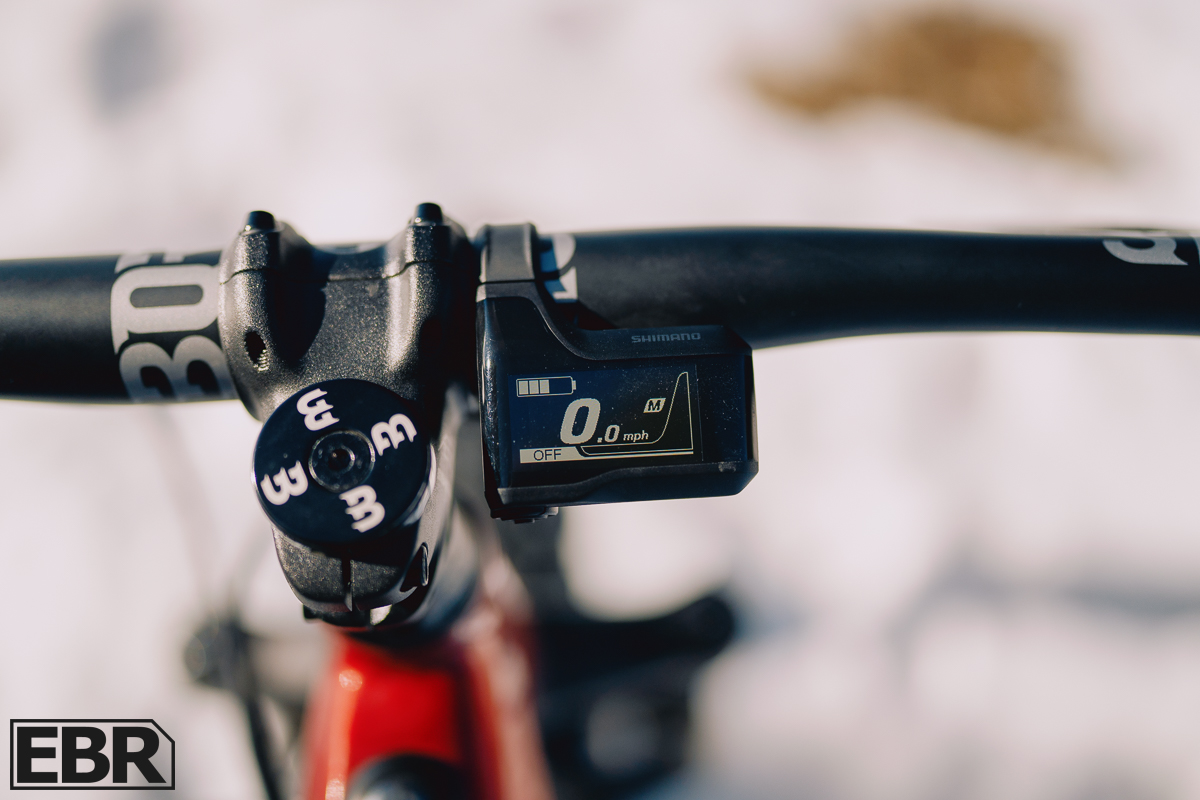
The Keystone runs Shimano’s SC-EM800 display – a compact unit that’s about as big as a fun-size candy bar at 1.6 inches. While some might wish for more screen real estate, it nails the basics with crisp visibility (five brightness levels for those sunny days) and all the data you need: speed, battery, time, PAS level, cadence, trip stats, and odometer. The four ride modes (Eco, Tour, Sport, and Boost) are capped at 20 mph, keeping things legal for Class 1 e-bike trails.
Where this system really shines is the E-Tube ecosystem. You’ve got two apps to play with: E-Tube PROJECT Cyclist for the nerdy stuff (tweaking assist levels, firmware updates, and diagnostics), and E-Tube RIDE for turning your phone into a bigger display with real-time ride data which for those who don’t want to squint at a small display helps make it much larger in display mode.
The cool part? You can either pick from Shimano’s pre-baked profiles or create your own custom setup. Want more torque in Tour mode but better battery life in Sport? You can do that.
While the tiny display might not win any beauty contests, the combo of physical display plus smartphone integration gives you the best of both worlds – basic info at a glance on the bars, deep customization in your pocket.
Borealis Keystone Model Options
Borealis keeps things straightforward with the Keystone’s lineup while giving you room to tailor the build to your needs. The aluminum hardtail frame (backed by a lifetime warranty for the original owner) comes in two colorways: red/black or grey/black. You’re looking at a proper modern mountain bike frame here, with thru-axles (15×150 front, 12×197 rear) and clean internal cable routing.
The size range is solid, with four frame options covering riders from 5’2″ to 6’5″. Each frame can handle up to 300 lbs of total load, which matters when you’re loading up those three mounting points (rear rack, down tube, and seat tube) for bigger adventures.
Where things get fun is the wheel and tire configurator. While my test bike rolled on Terrene Johnny 5’s, you can spec anything from studded Cake Eaters for ice duty to Maxxis Minions if you’re more about that year-round trail life. Wheel-wise, the standard SUNringle Mulefüts do the job nicely, but you can step up to HED alloys or carbons if you’re feeling fancy.
The accessories list keeps it practical – spare battery if you’re planning epic rides, extra tubes for the tube-loyal crowd, or tubeless tape and valves if you’re ready to ditch tubes altogether (seriously, do it – it’s worth the $30 upcharge).
One heads-up: while the frame’s got that lifetime warranty, the electronics run on manufacturer warranties, so you’ll want to register all that Shimano goodness right away.
Is The Borealis Keystone Worth Buying?
Coming into this review as a self-proclaimed fat bike skeptic, I’ve got to hand it to Borealis – the Keystone has seriously shifted my perspective. Here’s a fat bike that doesn’t just lumber down the trail like a snow plow with pedals. Instead, you get a surprisingly nimble rig that’s as happy shredding technical singletrack as it is floating through powder.
The spec sheet reads like a proper mountain bike, not a compromised fatty. That SRAM GX Eagle AXS setup with its massive 10-52t range means you’re never hunting for gears, while the Shimano EP8 delivers power so smoothly you almost forget you’re pushing 5-inch tires around.
Speaking of those tires – running them at low pressure creates such a plush ride that I started wondering if the Manitou fork was overkill. Don’t get me wrong, the adjustable 120-140mm Mastodon Pro is a quality piece, but I’d love to see a rigid fork option for riders who want to save some weight and cash while letting the rubber handle the squish.
Pros:
- This thing can haul serious gear with its 350 lb payload capacity, perfect for those loaded backcountry adventures
- The SRAM GX Eagle AXS drivetrain with that massive 10-52t range shifts like butter even when you’re mashing the pedals uphill
- Running those massive 5-inch tires at low PSI delivers a ride quality that’ll make you question if you even need rear suspension
- The Shimano EP8’s range is legit – 38 miles at full power means you can actually plan proper rides without range anxiety
- Whoever designed the geometry nailed it – this fatty actually likes to party on technical trails
- Three solid mounting points mean you can load this thing up for proper bikepacking missions
- The build quality and component choices show Borealis wasn’t just trying to hit a price point
Cons:
- Would love to see a rigid fork option – those tires are doing most of the work anyway and you’d save some cash and weight over the suspension fork.
Who’s it for? If you’re looking for a fat bike that doesn’t feel like a fat bike – something that can handle year-round trail duty while still crushing it in the snow – the Keystone deserves a serious look. It’s not trying to be the cheapest or the most extreme; instead, it hits that sweet spot where capability meets playfulness.
But if you’re purely after summer singletrack speed or looking for the most affordable entry into fat bikes, you might want to look elsewhere. This is a premium build for riders who want one bike to handle everything from winter epics to summer adventures, without feeling like they’re compromising either season.
The Keystone proves that “fat bike” doesn’t have to mean “slow bike” – and that’s coming from someone who usually prefers their tires skinny and their trails fast.

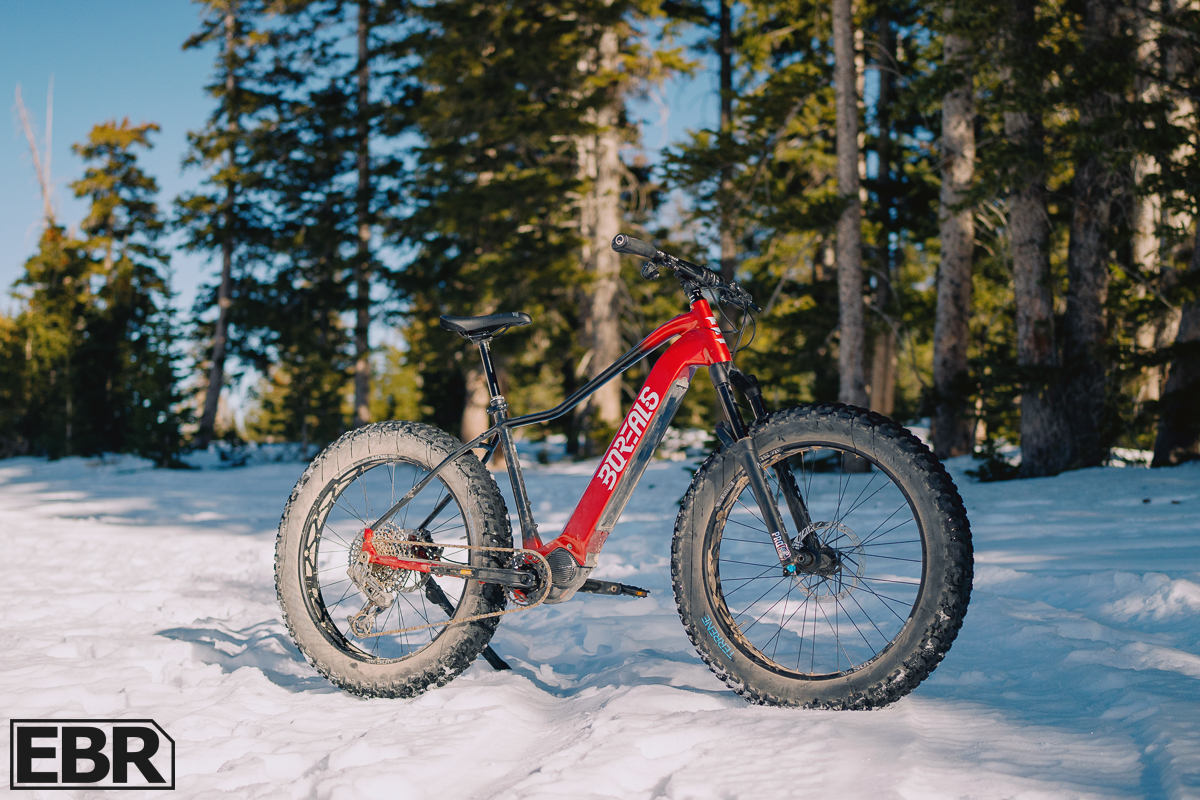
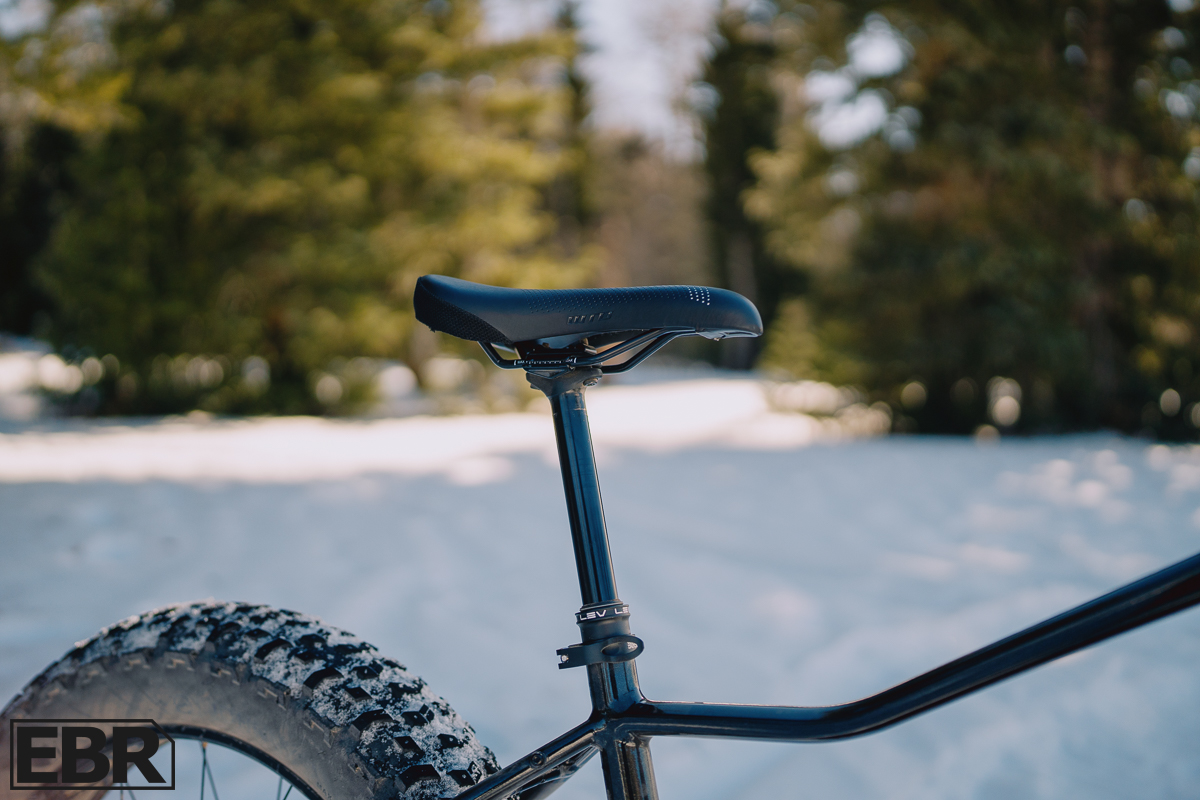
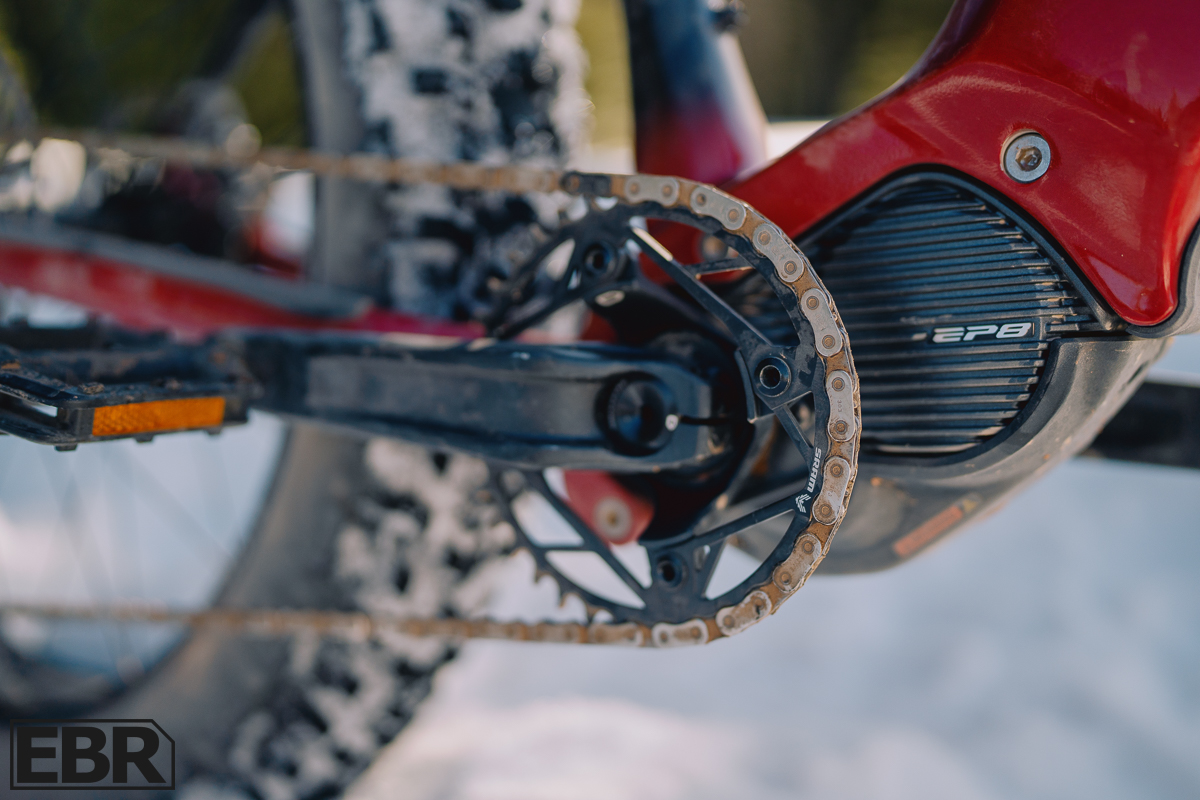
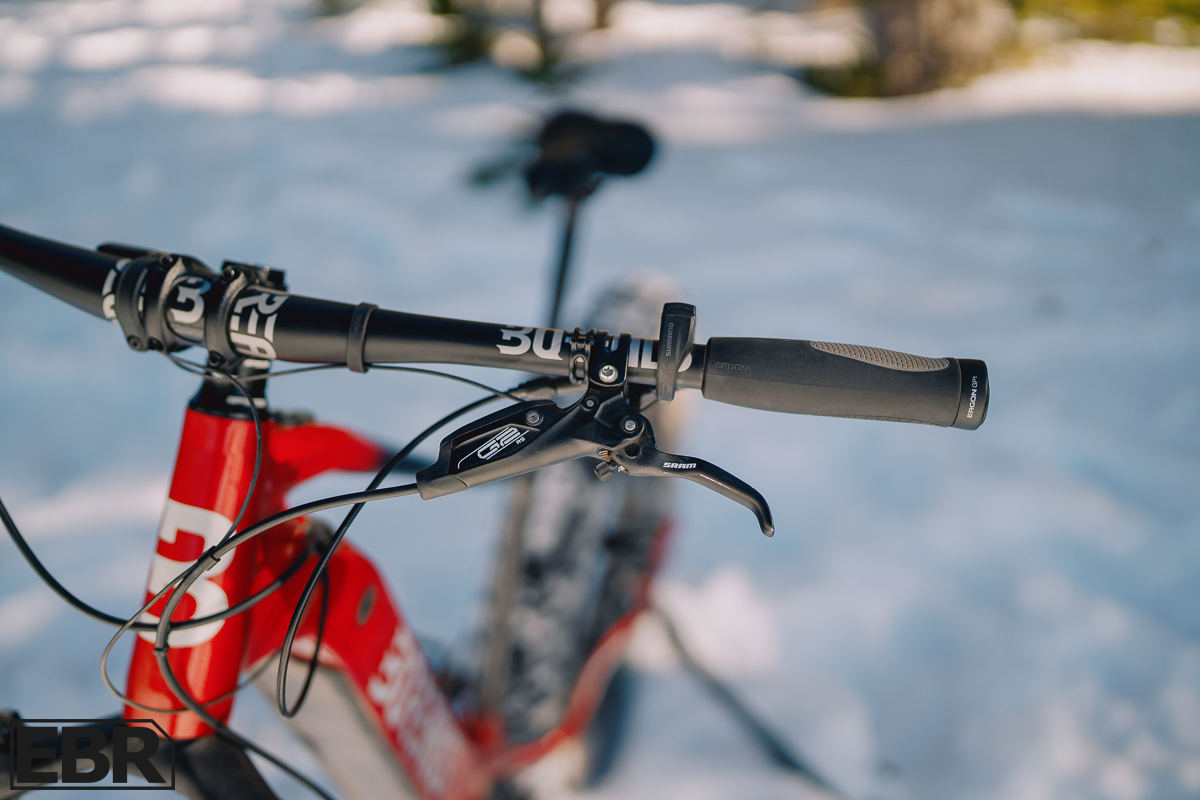
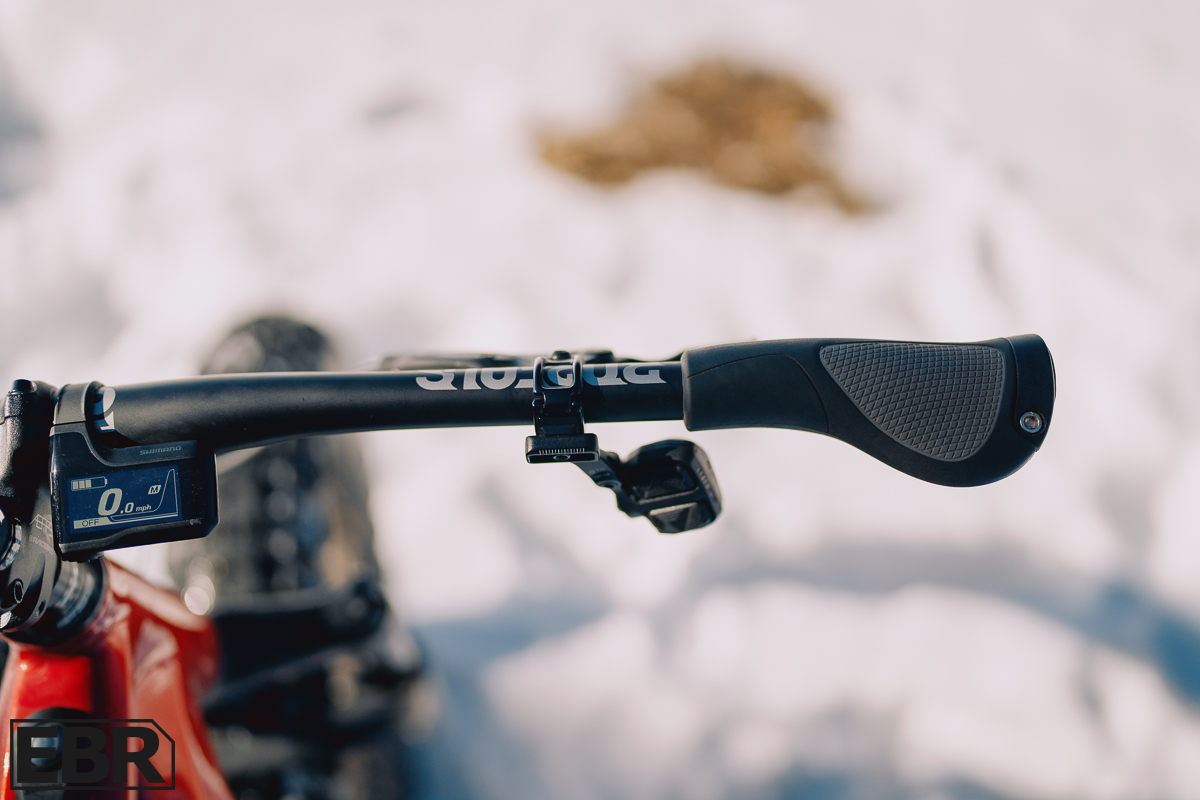
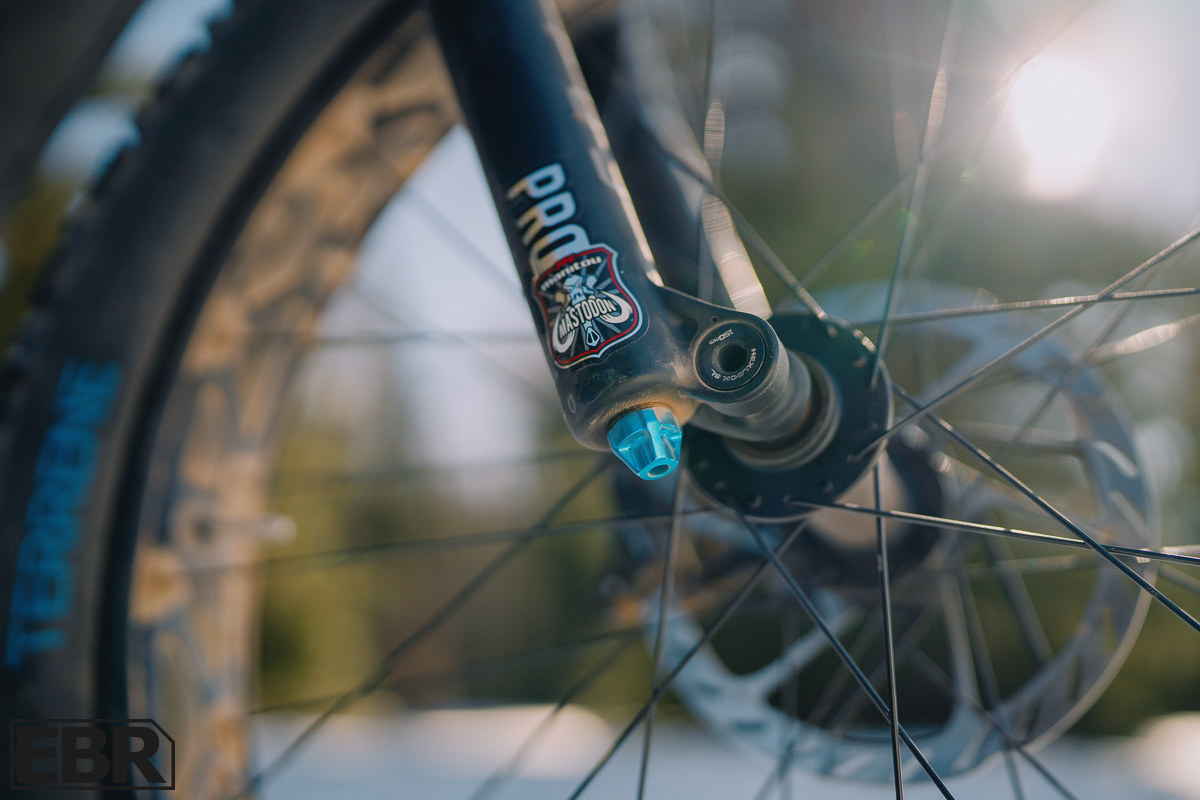

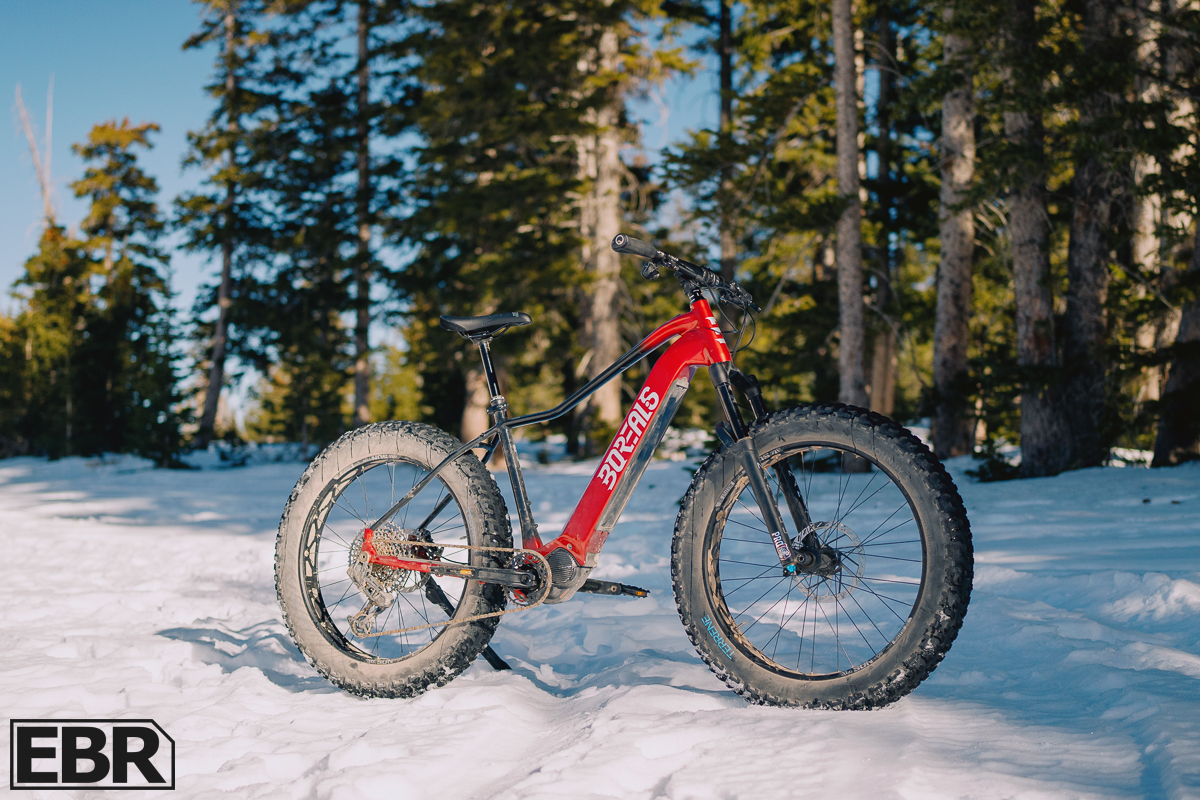
Reader Interactions